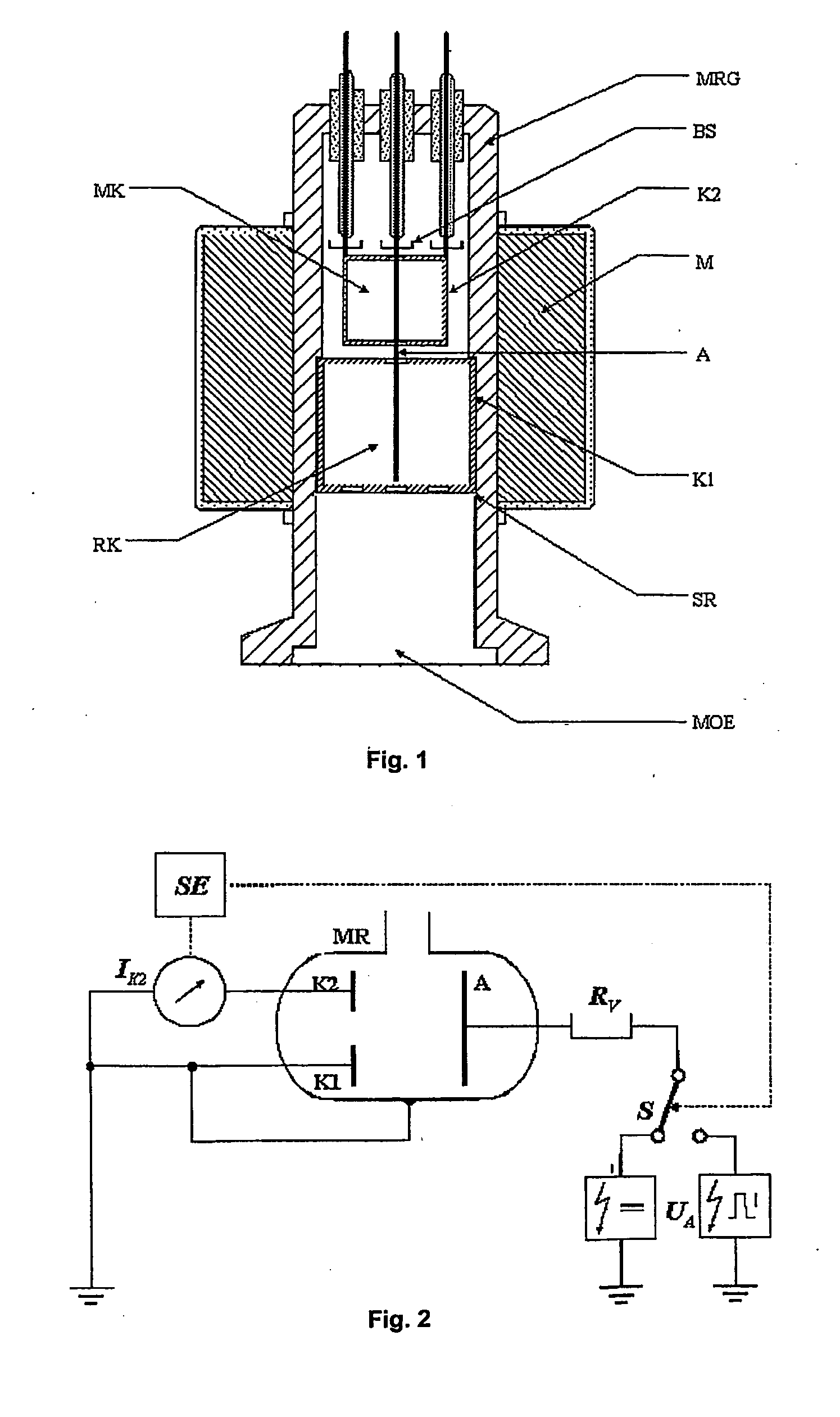Cold-cathode ionisation manometer having a longer service life due to two separate cathodes
a technology of ionization manometer and cold cathode, which is applied in the direction of measuring devices, instruments, particle separator tubes, etc., can solve the problems of limiting the usefulness of cold cathode ionization manometers, limiting the lower measuring range of manometers, and reducing the measuring accuracy, so as to improve the cold cathode measuring tube, improve the service life, and ensure the effect of good ionization
- Summary
- Abstract
- Description
- Claims
- Application Information
AI Technical Summary
Benefits of technology
Problems solved by technology
Method used
Image
Examples
Embodiment Construction
[0019] The housing MRG of the measuring tube consists of a tubular flange which is closed at the opening positioned opposite the measuring opening MOE (and its connecting flange to the measuring position). The closed side of the tubular flange contains three vacuum tight electrically well insulated conduits which are provided with a vaporization protection BS, one concentric one for the rod-shaped anode A and two eccentric ones for the second cathode K2 the discharge current of which is used for measuring purposes. Instead of one of the two measuring conduits for the second cathode K2, a bracket well insulated from the housing may be provided as a rigid support for the cathode K2. The two cathodes K1 and K2 are of drum or can-shaped configuration with substantially closed cap-like end surfaces. The second cathode Ka is positioned in the closed section of the housing MRG of the measuring tube and is secured in its position by suitable clamping connections which in turn are held by th...
PUM
 Login to View More
Login to View More Abstract
Description
Claims
Application Information
 Login to View More
Login to View More - R&D
- Intellectual Property
- Life Sciences
- Materials
- Tech Scout
- Unparalleled Data Quality
- Higher Quality Content
- 60% Fewer Hallucinations
Browse by: Latest US Patents, China's latest patents, Technical Efficacy Thesaurus, Application Domain, Technology Topic, Popular Technical Reports.
© 2025 PatSnap. All rights reserved.Legal|Privacy policy|Modern Slavery Act Transparency Statement|Sitemap|About US| Contact US: help@patsnap.com


